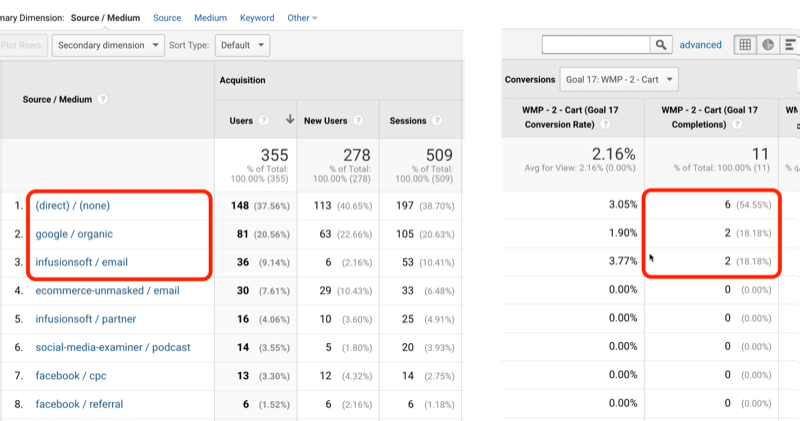Discover What Data Is Google Analytics Goals Unable to Track
Discover What Data Is Google Analytics Goals Unable to Track
Blog Article
Introducing the Blind Spots: Comprehending What Google Analytics Goals Can not Determine
In the realm of digital analytics, Google Analytics stands as an effective device for tracking and evaluating on-line customer communications. Amid its durable abilities, there exist blind places that usually escape dimension. what data is google analytics goals unable to track. Comprehending what Google Analytics goals can not gauge is important for gaining a detailed sight of user actions and engagement. As we dive into the ins and outs of these unseen areas, we discover a complicated web of undiscovered areas that hold important understandings into user actions and inspirations, tough conventional knowledge and clarifying the restrictions of our data-driven understanding.
Individual Actions on External Operatings Systems
Recognizing just how users communicate on exterior systems is crucial for enhancing on the internet approaches. External systems, such as social media networks, referral web sites, and online discussion forums, play a significant role in driving traffic to a firm's internet site. By evaluating customer actions on these platforms, organizations can obtain beneficial insights right into the efficiency of their marketing efforts and the preferences of their target audience.
One trick facet of individual habits on outside platforms is the recommendation resource. By tracking where the users are coming from, companies can recognize which systems are driving the most traffic to their site. This info can aid companies assign their resources better, focusing on the platforms that produce the most effective outcomes.

Offline Conversions and Interactions
Examining customer habits on outside systems gives valuable insights right into online methods; however, thinking about offline conversions and interactions is similarly critical for a thorough understanding of a firm's general performance. Offline conversions, such as in-store acquisitions or phone queries, play a substantial function in many companies' success.

Acknowledgment Beyond Last Click
When delving right into the realm of digital marketing analytics, it becomes necessary to look beyond the single touchpoint of the last click for a much more detailed understanding of site here acknowledgment. While Google Analytics supplies beneficial insights into user actions, relying entirely on last-click acknowledgment can be restricting - what data is google analytics goals unable to track. Acknowledgment designs that go beyond the last click provide an extra nuanced sight of the consumer journey, thinking about all the touchpoints that cause a conversion
Attribution past the last click enables online marketers to assign credit history to various interactions along the conversion course, offering a clearer image of the performance of various advertising channels. By exploring multi-touch attribution models such as direct, time degeneration, or position-based attribution, services can better allocate their advertising and marketing spending plans and enhance their techniques for maximum influence.
Comprehending the influence of each touchpoint in the conversion process is crucial for making educated choices and maximizing ROI. By welcoming attribution beyond the last click, organizations can obtain deeper understandings into client habits and tailor their marketing efforts better.
Cross-Device and Cross-Browser Monitoring

Similarly, cross-browser tracking enhances cross-device monitoring by capturing individual behavior as they switch in between different web browsers. Recognizing exactly how users connect with websites on various internet browsers over here can assist marketing professionals maximize their online experiences to make sure consistency and performance across different platforms.
Qualitative Data and User Intent
Understanding user intent through qualitative information evaluation is important for creating targeted electronic advertising and marketing strategies that resonate with the demands and choices of the target market. Qualitative information gives insights into the 'why' behind individual actions, clarifying motivations, feelings, and choices that measurable data alone can not capture. By analyzing customer feedback, remarks, and communications, online marketers can discover useful info regarding user intent, allowing them to tailor their messaging, content, and offerings to better straighten with what their target market is seeking.
Qualitative data additionally aids in recognizing the context in which individuals engage with a web site or application. This contextual understanding allows online marketers to create more relevant and personalized experiences, ultimately driving higher involvement and conversion prices. By delving right into customer intent through qualitative data evaluation, organizations can get a much deeper understanding of their target audience, resulting in more effective marketing strategies that satisfy individuals' needs and expectations.
Final Thought
In conclusion, Google Analytics objectives have restrictions in determining customer actions on external systems, offline conversions, acknowledgment past last click, cross-browser and cross-device tracking, and qualitative data connected to user intent. what data is google analytics goals unable to track. It is very important for organizations to be aware of these unseen areas in order to supplement their data evaluation with other tools and approaches to get a more thorough understanding of their audience and improve their general electronic marketing techniques
By examining customer behavior on these systems, businesses can acquire useful understandings right into the effectiveness of their marketing efforts and the preferences of their target audience.
Examining customer actions on exterior systems provides valuable insights into on the internet techniques; nevertheless, taking into consideration offline conversions and interactions is equally essential for an extensive understanding of a business's general performance.In digital advertising analytics, moving beyond last-click attribution to explore cross-device and cross-browser tracking is important for acquiring an alternative understanding of individual interactions across different systems and gadgets. By evaluating customer feedback, comments, and interactions, marketing professionals can reveal important info about user intent, permitting them to tailor their messaging, material, and offerings to much better align with what their target market is seeking.
By diving into customer intent via qualitative information analysis, businesses can get a much deeper understanding of their target audience, leading to extra effective marketing approaches that satisfy customers' needs have a peek at this website and assumptions.
Report this page